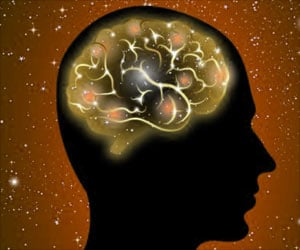Innovative earbuds detect driver fatigue through brainwave monitoring, enhancing safety in transportation and heavy machinery operations.
- Earbuds use EEG technology to monitor brain waves and detect drowsiness
- Comfortable, user-friendly design suitable for various ear shapes and sizes
- Potential applications include driver safety, heavy machinery operation, and sleep disorder diagnosis
Wireless ear EEG to monitor drowsiness
Go to source). Researchers at the University of California, Berkeley, have created a prototype for earbuds capable of detecting signs of fatigue through brainwave monitoring. This innovative technology holds immense promise for revolutionizing safety across various industries, from transportation to heavy machinery operation.
These earbuds can detect drowsiness and prevent accidents. #safetyelectronics #medindia #accident’
How The Earbuds Works
The earbuds function on a principle similar to electroencephalograms (EEGs) used in medical settings. Embedded electrodes within the earbuds make contact with the ear canal, capturing subtle electrical signals emitted by the brain. These signals, often referred to as brainwaves, carry valuable information about a person's mental state.By analyzing these brainwave patterns, advanced algorithms can identify specific characteristics associated with drowsiness. Alpha waves, for instance, are brain waves that increase in activity when a person closes their eyes or begins to fall asleep. The earbuds are designed to detect these patterns and trigger alerts when fatigue is detected.
Breakthrough in Wearable Technology
One of the most significant aspects of this technology is its user-friendly design. Unlike traditional EEG setups that require cumbersome equipment and gel-based electrodes, these earbuds offer a convenient and discreet solution. The researchers have focused on creating a comfortable and secure fit for various ear shapes and sizes, making the earbuds suitable for extended wear.Moreover, the earbuds' ability to accurately detect drowsiness in real-world conditions is a major breakthrough. While initial tests were conducted in controlled environments, the researchers have demonstrated that the technology can maintain its effectiveness even in challenging conditions.
Potential Applications of The Earbuds
The implications of this technology extend far beyond the realm of driver safety. Industries that rely on human operators working with heavy machinery, such as construction and mining, could benefit immensely from fatigue detection systems. By identifying signs of drowsiness in workers, accidents can be prevented, and overall safety can be enhanced.Furthermore, the earbuds' potential for monitoring sleep patterns and diagnosing sleep disorders is another exciting avenue for research. By tracking brainwave activity during sleep, valuable insights into sleep quality and potential sleep-related issues can be obtained.
While the development of fatigue-detecting earbuds is a promising step forward, several challenges remain. Ensuring consistent signal quality, optimizing battery life for extended use, and refining the earbuds' design for optimal comfort are ongoing areas of research.
Additionally, integrating the technology seamlessly into various applications, such as automotive systems and industrial equipment, will require collaboration between researchers, engineers, and industry partners.
Despite these challenges, the potential benefits of fatigue-detecting earbuds are immense. As technology continues to advance, we can anticipate further refinements and wider adoption of this life-saving innovation.
The future of safety lies in harnessing the power of wearable technology, and the earbuds developed by UC Berkeley researchers represent a significant milestone in this journey.
Reference:
- Wireless ear EEG to monitor drowsiness - (https://www.nature.com/articles/s41467-024-48682-7)
Source-Medindia
















